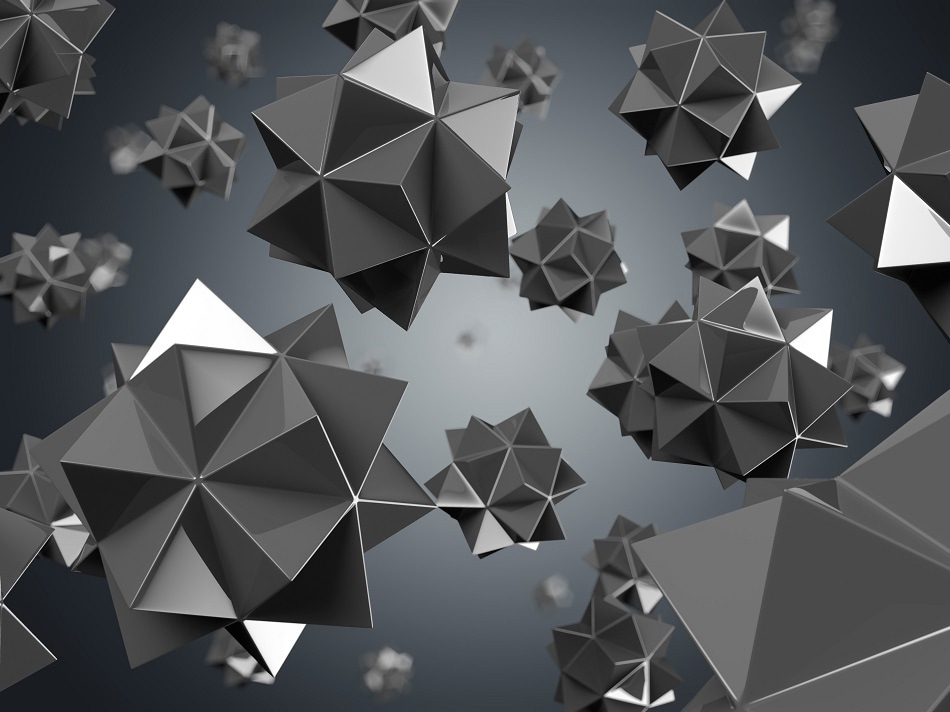Apr 27 2017
 Image Credits: Kostsov/shutterstock.com
Image Credits: Kostsov/shutterstock.com
Nanodiamonds are synthetic industrial diamonds that measure only a few nanometers. Recently, nanodiamonds have attracted significant attention due to their ability to carry out targeted delivery of cancer drugs and vaccines, and for other applications. To date, there have been limited possibilities for imaging nanodiamonds.
Now, a group of researchers from the Athinoula A. Martinos Center for Biomedical Imaging at Massachusetts General Hospital has developed a technique for noninvasive tracking of nanodiamonds by means of magnetic resonance imaging (MRI), thus making way for a range of innovative applications. The results of the research have been reported in a paper published in the online journal, Nature Communications on 26 April 2017.
With this study, we showed we could produce biomedically relevant MR images using nanodiamonds as the source of contrast in the images and that we could switch the contrast on and off at will. With competing strategies, the nanodiamonds must be prepared externally and then injected into the body, where they can only be imaged for a few hours at most. However, as our technique is biocompatible, we can continue imaging for indefinite periods of time. This raises the possibility of tracking the delivery of nanodiamond-drug compounds for a variety of diseases and providing vital information on the efficacy of different treatment options.
David Waddington, a PhD Student, University of Sydney
Waddington started his research three years back through a Fulbright Scholarship granted during the earlier days of his graduate work at the University of Sydney, where he is a member of a group headed by co-author of the study David Reilly, PhD, in the new Sydney Nanoscience Hub, the headquarters of the Australian Institute for Nanoscale Science and Technology started last year. Being one of the members in Reilly’s team, Waddington played a significant part in prior successes with nanodiamond imaging, which also includes a paper published in Nature Communications in the year 2015. Then, he attempted to expand the ability of the approach by work in cooperation with Rosen at the Martinos Center and Ronald Walsworth, PhD, at Harvard University. Ronald Walsworth is also a co-author of this research. Rosen’s and his colleagues are pioneers in ultra-low-field magnetic resonance imaging, a method that is crucial for the advancement of in vivo nanodiamond imaging.
Earlier the application of nanodiamond imaging to living systems was restricted just to regions accessible through optical fluorescence methods. Yet, a majority of potential therapeutic and diagnostic applications of nanoparticles—such as tracking of complex diseases like cancer—mandate the use of MRI, which is a gold standard for high-contrast, noninvasive, three-dimensional clinical imaging.
In this research, the researchers demonstrate that nanodiamond-enhanced MRI can be performed by leveraging a phenomenon called Overhauser effect to increase the inherently weak magnetic resonance signal of diamond by means of hyperpolarization—a process in which nuclei in a diamond are aligned such that they form a signal that can be detected by an MRI scanner. The traditional technique for carrying out hyperpolarization makes use of solid-state physics methodologies at cryogenic temperatures. However, the resultant boost in the signal does not last for a long time and is almost lost by the time the nanoparticle compound is inserted into the body. In order to solve this problem, the researchers combined the Overhauser effect with developments in ultra-low-field MRI emerging from the Martinos Center, thus achieving in vivo, high-contrast nanodiamond imaging for an indefinitely longer time.
High-performance ultra-low-field MRI is a comparatively new technology, reported by Rosen and Martinos Center collaborators in the year 2015 in Nature Scientific Reports. “Thanks to innovative engineering, acquisition strategies and signal processing, the technology offers heretofore unattainable speed and resolution in the ultra-low-field MRI regime,” explained Rosen, the senior author of the current paper who is also an assistant professor of Radiology at Harvard Medical School as well as director of the Low-Field Imaging Laboratory. “And importantly, by removing the need for massive, cryogen-cooled superconducting magnets, it opens up a number of new opportunities, including the nanodiamond imaging technique we’ve just described.”
The research team has found various prospective applications for their new approach toward nanodiamond-enhanced MRI, including precise detection of lymph node tumors, which can assist in metastatic prostate cancer treatment; and investigating the permeability of the blood-brain barrier, which can significantly assist in managing ischemic stroke. As the new approach offers a measurable MR signal for more than a month’s time, the method can be applied for monitoring the treatment response and so on.
Treatment monitoring includes applications in the mushrooming area of personalized medicine. “The delivery of highly specific drugs is strongly correlated with successful patient outcomes,” stated Waddington, who was awarded the Journal of Magnetic Resonance Young Scientist Award at the 2016 Experimental NMR Conference for his research. “However, the response to such drugs often varies significantly on an individual basis. The ability to image and track the delivery of these nanodiamond-drug compounds would, therefore, be greatly advantageous to the development of personalized treatments.”
The researchers are constantly working to investigate the ability of the method and have planned to carry out a comprehensive analysis of the approach in an animal model. They also propose to analyze the behavior of various nanodiamond-drug complexes as well as to image these complexes with the new approach.
Mathieu Sarracanie and Najat Salameh of the Martinos Center; Huiliang Zhang, and David R. Glenn of the Walsworth team at Harvard University; and Ewa Rej, Torsten Gaebel, and Thomas Boele of the Reilly team at the ARC Centre of Excellence for Engineered Quantum Systems, University of Sydney are other authors of the Nature Communications paper. The U.S. Department of Defense/USAMRMC, the Australian Nuclear Science and Technology Organisation, and the Australian-American Fulbright Commission funded the research.